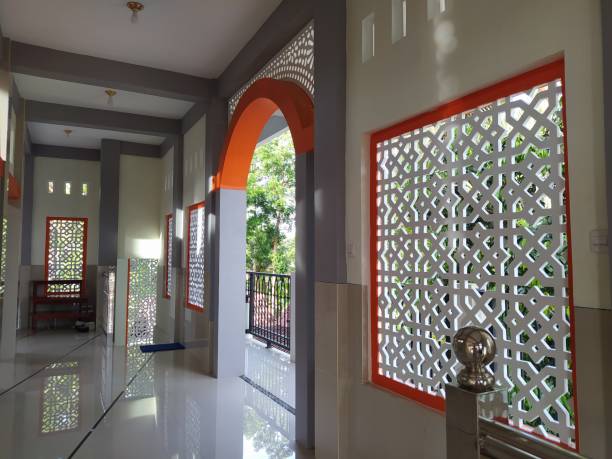Terracotta floor tiles exude warmth, earthiness, and timeless Mediterranean charm. But for many homeowners and designers, one question lingers: what colors go with terracotta floor tiles?
Let’s dive deep into the world of brick color theory, interior design principles, and style inspiration to help you pair terracotta tiles with the right hues—whether you’re designing a rustic farmhouse, a coastal retreat, or a modern space with earthy undertones.
Understanding the Nature of Terracotta
Before choosing colors, it’s important to understand what terracotta really is.
Terracotta, derived from the Italian word for “baked earth,” is a clay-based ceramic. Its distinctive reddish-orange tone is the result of iron-rich clay fired at low temperatures. Because of its natural, grounded color, terracotta brings warmth, texture, and a slightly rugged character to interiors.
These earthy tones range from burnt sienna and rust to softer peachy-orange hues. This variation plays a key role when selecting complementary colors.
Best Color Combinations for Terracotta Floors
1. Soft Neutrals: White, Cream, and Beige
Why it works: Neutral tones allow terracotta tiles to shine without competing for attention. They lighten the space while balancing the warm undertone of the flooring.
- Cream walls add softness and warmth without overwhelming the eye.
- Crisp white trims or ceilings create contrast and a clean finish.
- Beige and taupe furnishings help layer the palette without becoming monotonous.
Perfect for: Mediterranean kitchens, airy living rooms, and minimalist interiors.
2. Deep Greens: Olive, Sage, and Forest
Why it works: Green is the complementary color to red on the color wheel. Earthy greens like sage or olive harmonize beautifully with terracotta’s richness, creating a natural, grounded feel.
- Sage cabinetry with terracotta floors evokes a Tuscan countryside vibe.
- Olive green drapes bring a mature, vintage character to a space.
- Forest green accent walls add drama while still feeling organic.
Perfect for: Dining rooms, rustic kitchens, and outdoor patio spaces.
3. Muted Blues: Slate, Dusty Blue, and Steel
Why it works: Blue and orange are natural complements. When softened into dusty or muted tones, blues bring a cooling effect that offsets terracotta’s inherent warmth.
- Slate blue sofas against terracotta tiles offer balance without clashing.
- Steel blue cabinetry in a bathroom can feel serene and spa-like.
- Dusty blue textiles—rugs, curtains, or throws—introduce freshness.
Perfect for: Coastal living rooms, transitional hallways, and relaxed bedrooms.
4. Warm Earth Tones: Mustard, Ochre, and Rust
Why it works: These hues belong to the same warm family as terracotta and create a monochromatic look that’s full of depth and character.
- Ochre cushions and textiles echo terracotta’s hue while adding interest.
- Mustard yellow adds vibrancy while maintaining harmony.
- Rust-colored accents like lampshades or vases enhance texture and continuity.
Perfect for: Boho-chic spaces, eclectic interiors, and southwest-style homes.
5. Charcoal and Deep Gray Tones
Why it works: Deep grays provide contrast without being harsh. They anchor the room and give terracotta a more contemporary feel.
- Charcoal gray furniture adds sleekness and structure.
- Graphite kitchen countertops pair seamlessly with terracotta flooring.
- Smoky gray walls offer sophistication while still letting the floors stand out.
Perfect for: Industrial interiors, modern farmhouse styles, and urban lofts.
6. Blush and Soft Pinks
Why it works: Soft pinks mirror terracotta’s warm undertones while adding a romantic, calming energy. When used subtly, they enhance without overwhelming.
- Blush-toned bedding creates a serene bedroom oasis.
- Pale pink wall art warms up the space subtly.
- Rosy beige rugs bridge the floor with other warm tones.
Perfect for: Bedrooms, nurseries, or feminine reading nooks.
Lighting Matters
Color perception changes drastically under different lighting. Terracotta floors tend to glow in natural daylight and deepen in dim evening light. Use this to your advantage:
- Choose cooler complementary shades in sun-drenched rooms.
- Opt for warm whites and soft neutrals in low-light spaces to maintain warmth.
Textiles, Materials & Finishes That Go Well with Terracotta
To complete the look, coordinate other materials thoughtfully:
- Natural fabrics like cotton, linen, and jute enhance the earthy character.
- Wood finishes, especially in oak, walnut, or reclaimed timber, complement terracotta’s rustic tone.
- Brushed brass or matte black hardware can elevate the style—either adding warmth or contrast.
Common Design Mistakes to Avoid
- Avoid cool, sterile whites. They can clash with terracotta’s warmth.
- Steer clear of overly bright or saturated colors. These can overpower the grounded vibe of the tiles.
- Don’t ignore undertones. Match color undertones with the specific shade of your terracotta tiles.
Inspiration by Room
- Kitchen: Pair terracotta with soft sage cabinets, wooden counters, and brass pulls.
- Bathroom: Terracotta floors with muted blue or gray walls, white ceramic fixtures.
- Living Room: Terracotta base layered with cream rugs, rattan chairs, and olive green throws.
- Outdoor Patio: Combine terracotta tiles with potted greens, jute mats, and beige-toned seating.
Conclusion: Designing With Terracotta, Thoughtfully
Terracotta floor tiles offer more than just durability—they’re a design statement rooted in nature, history, and warmth. By choosing the right color palette, you can elevate any room from ordinary to inviting, textured, and deeply harmonious. Check out more blog here buildinsights

